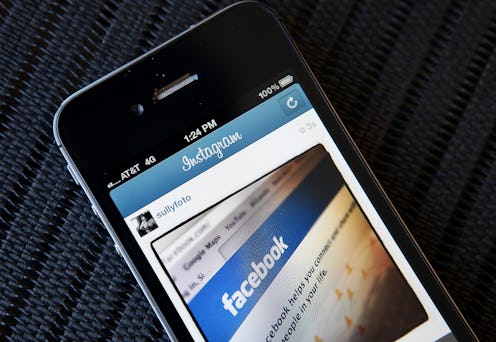News
No One Wants Instagram Ads
On Thursday, photo-sharing giant Instagram announced that it would begin integrating advertisements into users' feeds. In a slightly sheepish blog post, the Facebook-owned company promised that the ads would start slowly, and that users would be able to nix the "occasional" brand they didn't like. "We have big ideas for the future," the post explained, "and part of making them happen is building Instagram into a sustainable business." In other words: Guys, at the moment, we're not making any money.
Last year, Facebook purchased Instagram for a casual $1 billion. Since then, Instagram's user base has multiplied itself five times over — but the photo-sharing platform is yet to make a cent for its parent corporation.
Like Twitter (whose IPO filing was made public yesterday, revealing that it just isn't profitable) it doesn't matter how popular and mainstream a company is — if you not ad-supported, you don't have a chief source of revenue. Facebook bought Instagram expecting to profit from the platform's popularity, and has deliberately based Instagram's business model upon the one successfully tried-and-tested by Zuckerberg and co. Like Facebook before it, the parent company waited for Instagram's user base to balloon to record levels (150 million, at present) before it took the risky step of integrating ads.
So what will the ads look like? Well, pretty much like everything else on your Instagram feed — only, as is the chief point of complaint from irritated critics, you won't choose to follow them. At the moment, if you're following brands like Nike, Abercrombie, or even Instagram (so meta!), you've chosen to see their ads — which, for retail brands, tend to look all shiny and Instagram-friendly — pop up in your feed alongside your friends' cereal bowls. But if Instagram thinks you might lean towards Taco Bell, which doesn't lend itself quite so well to Instagram, you'll see their ads pop up as if you'd chosen to follow their account. Like this one, from Lululemon, which was one of the first companies to grab themselves an Instagram account.
The only thing that will change, really, is that you'll see images like this whether you're a devout Lululemon lover, or whether you vaguely think it's a brand of cough drop.
There's a problem, though: because Instagram's interface has the main photograph filling the screen, that's 100 percent of your attention directed at an ad. Even Facebook's much-criticized ads only take up a tiny square of the screen, and there's no visual requirement to look at them. This is why Instagram has to tread carefully with this one: people don't take kindly to being forced to look at ads, and the company is in danger of losing its fan base if people are inundated by images they don't want.
There's another key difference between Facebook ads and Instagram ads: Facebook, as a brand, is more pragmatic than "hip:" it's a global phenomenon, and isn't as niche and beloved as Instagram. The photo-platform's users have a pretty intimate relationship with the brand: unlike Facebook, it does one key thing — taking, filtering, and sharing photographs — and it does it well. This has led people to label it "sincere," which isn't something anyone's called Facebook in years. And people don't take well to their dearly-beloved, sincere products selling out.
Instagram has been planning this move for a while: its video-sharing update wasn't just for the sake of its users, but also because moving mobile ads are becoming incredibly lucrative. Mobile advertising has seen a growth of 89 percent in 2013 alone, according to the Wall Street Journal, and that's too tempting a business move for Facebook to resist. Don't forget that Facebook isn't just a website, but a company with huge goals — and turning Instagram into a multi-billion-dollar subsidiary has always been a part of their business plan.
Just as long as it doesn't go down the route to true sellout, as seen here regarding Syria...
